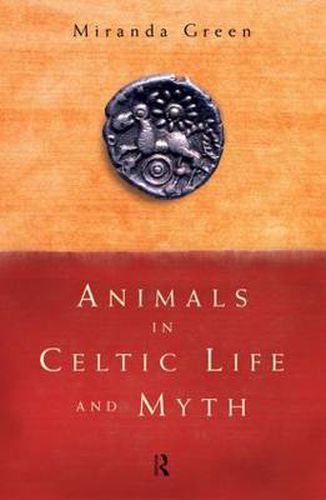Readings Newsletter
Become a Readings Member to make your shopping experience even easier.
Sign in or sign up for free!
You’re not far away from qualifying for FREE standard shipping within Australia
You’ve qualified for FREE standard shipping within Australia
The cart is loading…






For the Celts, a rural people whose survival depended so greatly upon their environment, the sanctity of natural phenomenon and of the elements led to extreme respect and veneration of animals. Both wild and domesticated species became the subject of elaborate rituals and formed the basis of profound religious beliefs. Animals in Celtic Life and Myth examines the intimate relationship which developed between humans and animals, in a society in which animals were special and central to all aspects of life. Miranda Green draws on evidence from a variety of early Celtic documents, as well as archaeology and iconography, to reveal that the Celts believed many animals to be sacred, either possessing divine status in their own right or acting as mediators between gods and humans. She covers the crucial role of animals in the Celtic economy; in hunting and warfare; in Celtic art and literature; in religion and ritiual. The attitude of the Celts towards animals closely connected the cult and the everyday; warfare was bound up with religion; the killing of animals was associated with ritual; in stories, heroes talk to animals in their own language and gods change at will from human to animal form. The book covers the important period between 8 B.C. and 1 A.D., during which much of Europe was turning to Christianity, and ranges from Ireland to Czechoslovakia.
$9.00 standard shipping within Australia
FREE standard shipping within Australia for orders over $100.00
Express & International shipping calculated at checkout
For the Celts, a rural people whose survival depended so greatly upon their environment, the sanctity of natural phenomenon and of the elements led to extreme respect and veneration of animals. Both wild and domesticated species became the subject of elaborate rituals and formed the basis of profound religious beliefs. Animals in Celtic Life and Myth examines the intimate relationship which developed between humans and animals, in a society in which animals were special and central to all aspects of life. Miranda Green draws on evidence from a variety of early Celtic documents, as well as archaeology and iconography, to reveal that the Celts believed many animals to be sacred, either possessing divine status in their own right or acting as mediators between gods and humans. She covers the crucial role of animals in the Celtic economy; in hunting and warfare; in Celtic art and literature; in religion and ritiual. The attitude of the Celts towards animals closely connected the cult and the everyday; warfare was bound up with religion; the killing of animals was associated with ritual; in stories, heroes talk to animals in their own language and gods change at will from human to animal form. The book covers the important period between 8 B.C. and 1 A.D., during which much of Europe was turning to Christianity, and ranges from Ireland to Czechoslovakia.